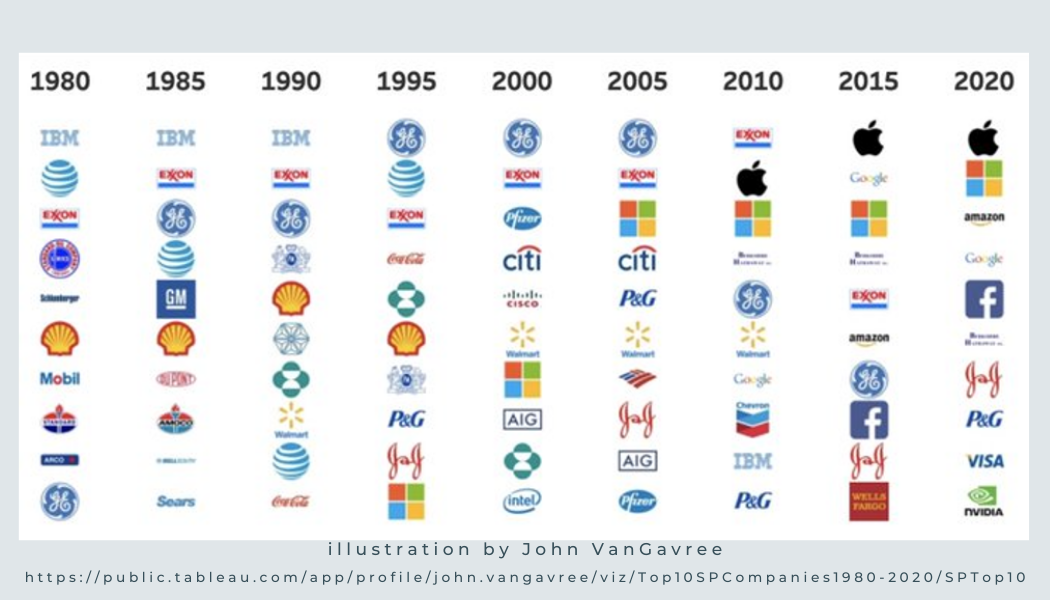
by Kate Evert | Feb 8, 2022 | Data, Economy, Future of Work, Human Capital, Inspiration, Labor Markets
… by all of the recent jobs data.
In an attempt to make any sense of all of the swirling data, I listened to a recent podcast by The Economist which showcased a few employers in Buffalo, New York. Some companies there are willing to hire for potential: people that they know can do the work but lack specific skills, so they are willing to train them.
In recent decades, as the Baby Boomers flooded the labor market, the days of investing in employees and training seemed to evaporate. Too few organizations were willing to invest in employee training, and seemed reluctant to hire based on competencies or a person’s distinctive combination of experiences and skills that could contribute to an enterprise.
If there is one thing you think of when you hear Buffalo, it is SNOW. During the podcast, I began to think of Snowflake Bentley, a children’s book, with art so captivating that it won the coveted Caldecott Medal for its illustrations in 1999.
Snowflake Bentley’s parents didn’t treat him the same as every other farm boy; they encouraged his curiosity and invested in his interest to study nature – especially the elusive quest to photograph something that could melt in an instant.
Like snowflakes, no two humans are alike. The labor markets right now are about as fierce as the snowstorms that Snowflake Bentley braved for his research. The companies that will weather this storm are those that understand what core elements are essential to making someone successful at their organization. Then, if they believe in the potential of the people they hire, invest in them and their raw talent, and reward them not only with compensation, but with increasingly interesting assignments, those organizations need not be adrift.

by Kate Evert | Feb 2, 2022 | Covid-19, Future of Work, Human Capital, Inspiration, Pivoting, Productivity, Strategy
Those of us of a certain age, grew up when Groundhog Day only meant one thing: one day in February when kids, especially, waited to see if there was a chance of an early spring.
Since the early 1990s, the phrase has taken on a new meaning, a day that seems to repeat over and over again … without end. In the spirit of that NEW meaning, we are rerunning last year’s February 2 Blog …
If Covid had a mascot, it would be the groundhog, at least in the United States. Various animals in different northern regions have stuck their necks out to foretell if winter is over. Every year on February 2, many cultures look for a sign that winter might end.
Recently, a podcast caught my attention; hadn’t hit start, hadn’t heard of the book, but who wouldn’t keep listening about a book called Wintering when it is January in the snowy North? The author, Katherine May, read a passage:
“Plants and animals don’t fight the winter; they don’t pretend it’s not happening and attempt to carry on living the same lives they lived in the summer. They prepare. They adapt.”
Suddenly you recall an Aesop’s fable, of the Ant and the Grasshopper. One creature is busy storing food for the cold weather, one plays in the sun and does not. You probably first heard this tale at about the age of five, and Aesop wrote, or at least recorded it, 5,000 years ago.
In her interview, the author says she feels that Covid has been one L O N G Wintering. Many of us have forgotten how to winter—how to store away preserves in our cellars for the seasons in which the harvests are not plentiful. Companies either don’t retain earnings for a rainy day or are pressured to pay them out to shareholders.
This February 2, the groundhog represents us emerging from our Covid Hibernation, looking for hope, an efficient vaccine distribution system, some semblance of normal. As we all know we will have at least six more weeks of Covid Winter, but perhaps we can resolve to prepare a bit more for our next “wintering”—whatever it may be—so that we might be more prepared, like the ant, and not have to go underground, like the groundhog.

by Kate Evert | Nov 1, 2021 | Corporate Culture, Creativity at Work, Future of Work, Human Capital, Innovation, Leadership Agility, Performance Management, Performance Reviews
All the communal handwringing and bickering about: The Return to the Office
We’ve been using the wrong model.
HINT: think about the companies that dubbed their office “A Corporate Campus”
For those people that left home after high school to go away to college, what was the single most earth shattering change?
YOU DIDN’T REPORT INTO CLASS SEVEN OR EIGHT HOURS A DAY!
Prior to this, much of your success in education was tied to: showing up. If you didn’t, they called home. If you did this A LOT, there were meetings with your parents, or Saturday detention: [cue the Breakfast Club soundtrack now …]
Heck, the local government even paid people to be Truancy Officers and look for kids playing hooky.
Now, you get to your college and depending on the professor, they might not even take attendance. You might find out that there was absolutely no credit for attendance or participation.
As a lowly freshman, you got stuck with those 8 am classes MWF … or even worse, a 4 pm on MWF.
By the time you were a senior, you might have a seminar that met once a week. Once a week? In a small class where you only had, what 12 weeks to impress your professor? Nowhere to hide … had to have all that reading done …
You might find out that you had a class where 100% of your grade was how you did on the final exam.
So how did those professors know if you were doing your work?
- Did they stop by your dorm room at 2 am?
- Did they take attendance in the library? Know which carrel was your favorite and check to see if their text book was open and highlighted in the appropriate chapter for that week?
- In nice weather, did they stop by your spot on the lawn and make sure that you were reading text books?
- Did they attend parties or scour the local bars to make sure that your reading was done for the next day?
Probably not.
They graded your papers and your tests.
They evaluated your performance.
How is this different from hybrid work?

by Kate Evert | Oct 12, 2021 | Corporate Culture, Creativity at Work, Future of Work, Human Capital, Human Resources, Innovation, Labor Markets, Leadership Agility, Management, Performance Management, Pivoting, Productivity
This chart is eye grabbing.
Most reading this blog will easily recognize the vast majority of these logos. You aspired to work at some, you DID work for some.
One logo immediately caught my eye. In my days as a credit analyst, I signaled they were facing headwinds. In return, I got an extreme dressing down. The summation of that boss’s lecture? They were one of the largest companies in the country so how could I possibly even think to suggest that they were anything but stable?
The companies that have fallen off of this chart have done so for various reasons, for some it was hubris, for others an inability to pivot, in other cases, tastes change. A lack of innovation led to the demise of many.
Just yesterday, Jack Kelly had a piece in Forbes about the ultimate innovation: tailoring jobs to the individual needs of the various workers. Given the current labor and talent shortage in the U.S., this is exactly the right sort of solution for many organizations.
When firms can keep a clear focus on the deliverable, the output, where or how something gets done is less important.
Kelly says:
Consider how much better work would be if managers held conversations with their team, actively listened to how they’d like to work and then designed the job around their needs. Morning people could start early. Night owls can begin later in the day.
I lived this. Over 20 years ago at PwC, we had a well-oiled team that knew each other’s bio-rhythms and peak productivity hours. We joked that there were probably only three hours that someone from our group wasn’t awake and available; one person was an extreme lark that got into the office at 5:00 am, while another was such an extreme night owl that we regularly got emails from him at 2:00 am, working remotely. That is when I started experimenting with working from home … which one secretary dreaded because in uber-efficiency mode I banged through my To Dos, which then required her involvement.
As so many HR experts have reiterated: there are two ways to measure performance – inputs and outputs. Do you want to measure the hours that you see someone in (or their jacket on) their chair? Or do you want to measure what they deliver? The RESULTS.
Go back to that left hand side of the graphic. What happened to the temples those companies built? Big Stan in Chicago? GE Headquarters in Connecticut? The Sears Tower? They filled up with employees each morning and emptied every night.
Big buildings don’t matter. That S&P graphic is based on results.

by Kate Evert | Oct 5, 2021 | Economy, Future of Work, Human Capital, Human Resources, Leadership, Management, Work Place
It happened again the other day.
What I heard would surprise no one in HR.
Someone knew I did something in HR and needed to unburden.
The person, who approached as though THEY were the sinner, wanted some clarity, some understanding, some reassurance.
Meanwhile the transgressors never seem to seek counsel.
The mindset of many employees was summed up recently:
“They’re actually questioning the whole meaning of the daily grind. Why do we put so much of ourselves into our careers? And are we getting a fair deal from our employers in return for all of this stress and heartache?” Read More Here
When they vote with their feet, their answer is: NO – we aren’t getting a fair deal. Often it is not about the money, it is about the recognition of the sacrifices or tradeoffs that they’ve been making: maybe for 18 months, perhaps for a decade … or two.
It is one thing to joke that HR folks are like priests in a confessional – we’ve heard and seen it ALL BEFORE … and we will carry some secrets to our graves to protect those that have confided in us.
It is another when too many in leadership positions fail to have faith in what HR experts try to impart, for decades.
The non-sinner has moved on, with a clear conscience, now free from a non-enlightened employer.
Leadership’s penance? Trying to fill roles left vacant by once loyal employees.
![[Human] Capital Calibration](https://commonwealthhr.com/wp-content/uploads/2021/08/Website-Human-Capital-Calibration-1080x675.png)
by Kate Evert | Aug 17, 2021 | Competencies, Corporate Culture, Covid-19, Economy, Future of Work, Hiring, Human Capital, Human Resources, Jobs, Labor Markets, Productivity, Work From Home
Manufacturing equipment has come a long way since 1964. The environment in which you put your equipment? Back then, a somewhat level floor, a power supply, fans for HVAC, and what was a little grease on the floor? You turned it on, and assumed it would run. When you invest in a sophisticated machine today, you may build a special room, complete with its own HVAC and filtration. You wouldn’t dream of operating this equipment without the needed care and calibration. Your organization ensures that those responsible for the care and upkeep of this huge capital investment have the requisite technical expertise to protect your investment; you wouldn’t dream of leaving it to someone that didn’t know what they were doing. Yet why are we okay doing that to our largest investment: our employees.
The current conversation about “back to the office” seems a lot more like 1964, the year that Gary Becker published his first book on human capital. He rocked the world of economics and business with his work on the value of human capital –– people were one of your most valuable assets. It paid to further invest in them now that their life span was longer and technological advances made new skill acquisition imperative.
We sit here in 2021 as the seeming randomness of Covid deaths and quarantining has given Americans plenty of time to pause to reflect on the meaning of life. For many Americans, they are finally understanding their worth as a unique model of human capital. They’ve grown to understand the distinctive sets of skills that they have acquired, honed, and refined over the years AND the optimum conditions under which they perform. When an employer doesn’t understand that, enter…
The Great Resignation
One of my favorite Total Rewards thought leaders, John Bremen, has written a great article, advising how organizations can turn The Great Resignation into the Great Hire. He very rightly points out that more people have been hired in 2021 than have quit – which side of the equation is your organization on?
Solution? It’s not about going back to “the way we always did things.” It IS about recognizing the conditions under which employees can turn in peak performance and earn their organizations more gold.






![[Human] Capital Calibration](https://commonwealthhr.com/wp-content/uploads/2021/08/Website-Human-Capital-Calibration-1080x675.png)